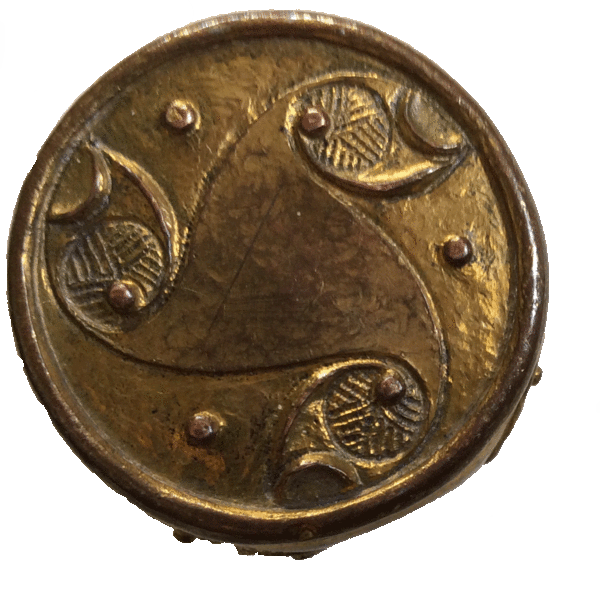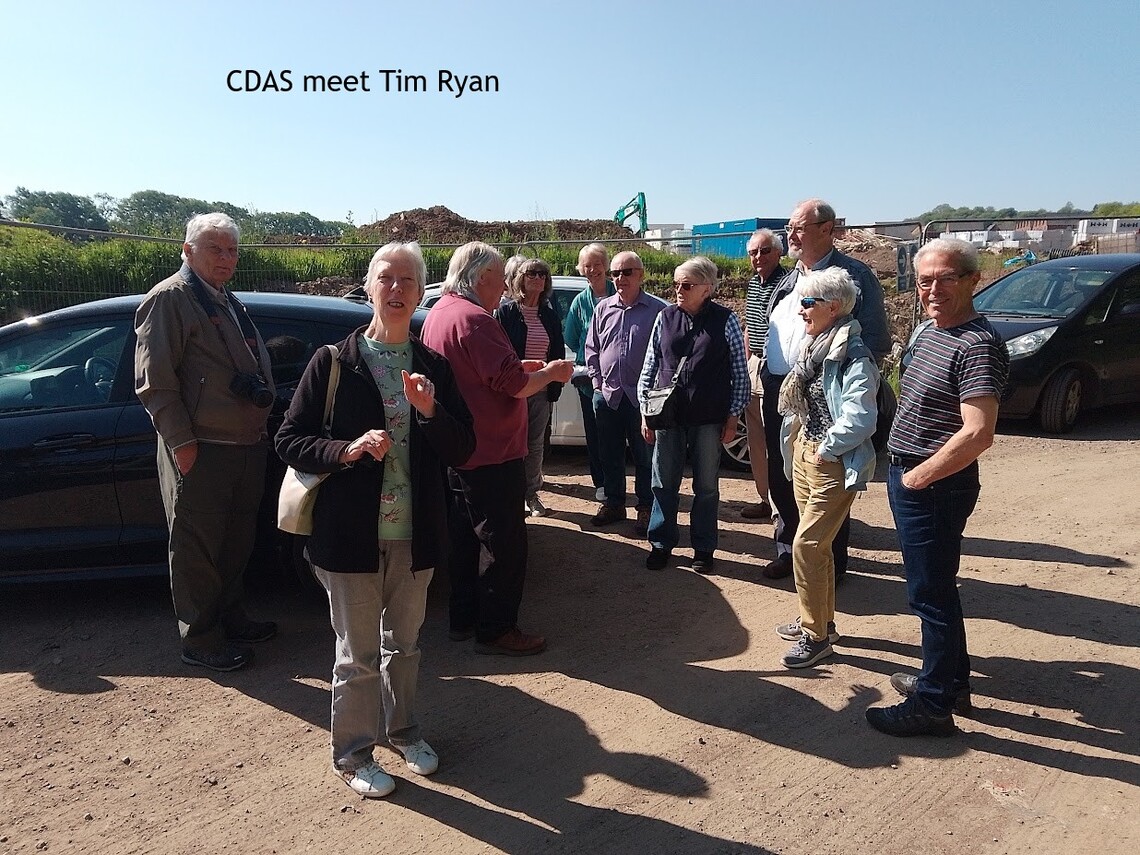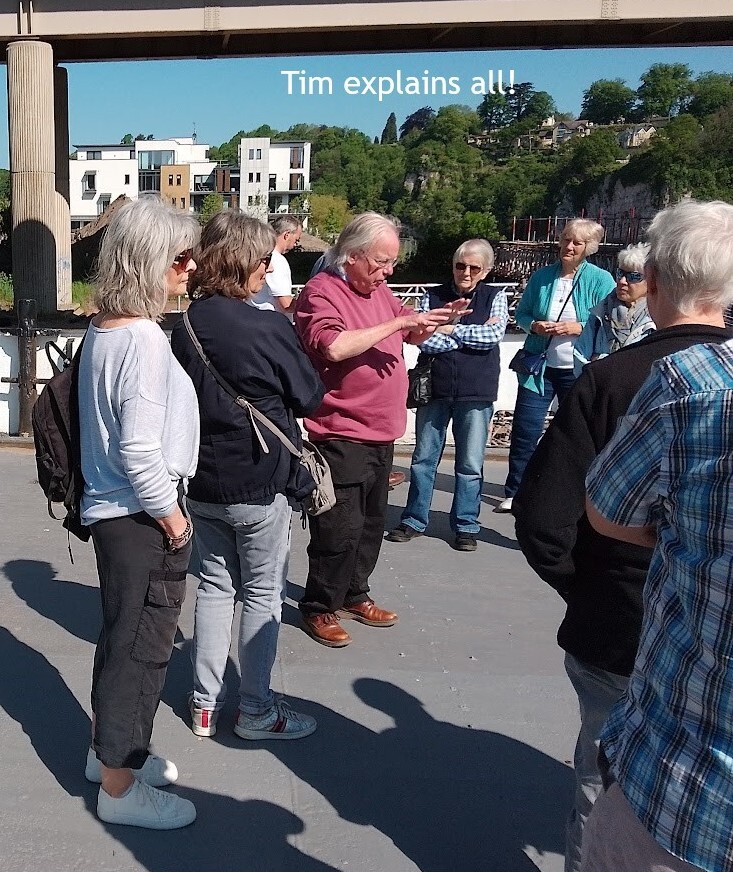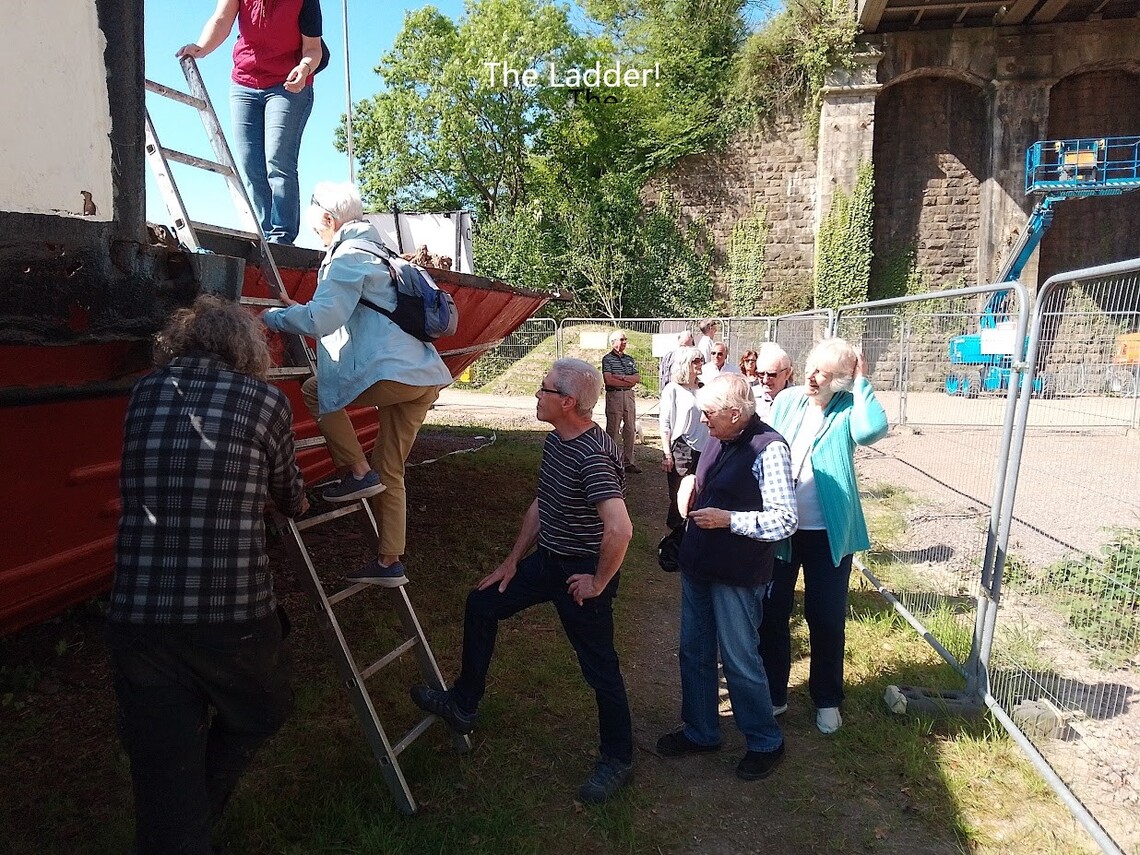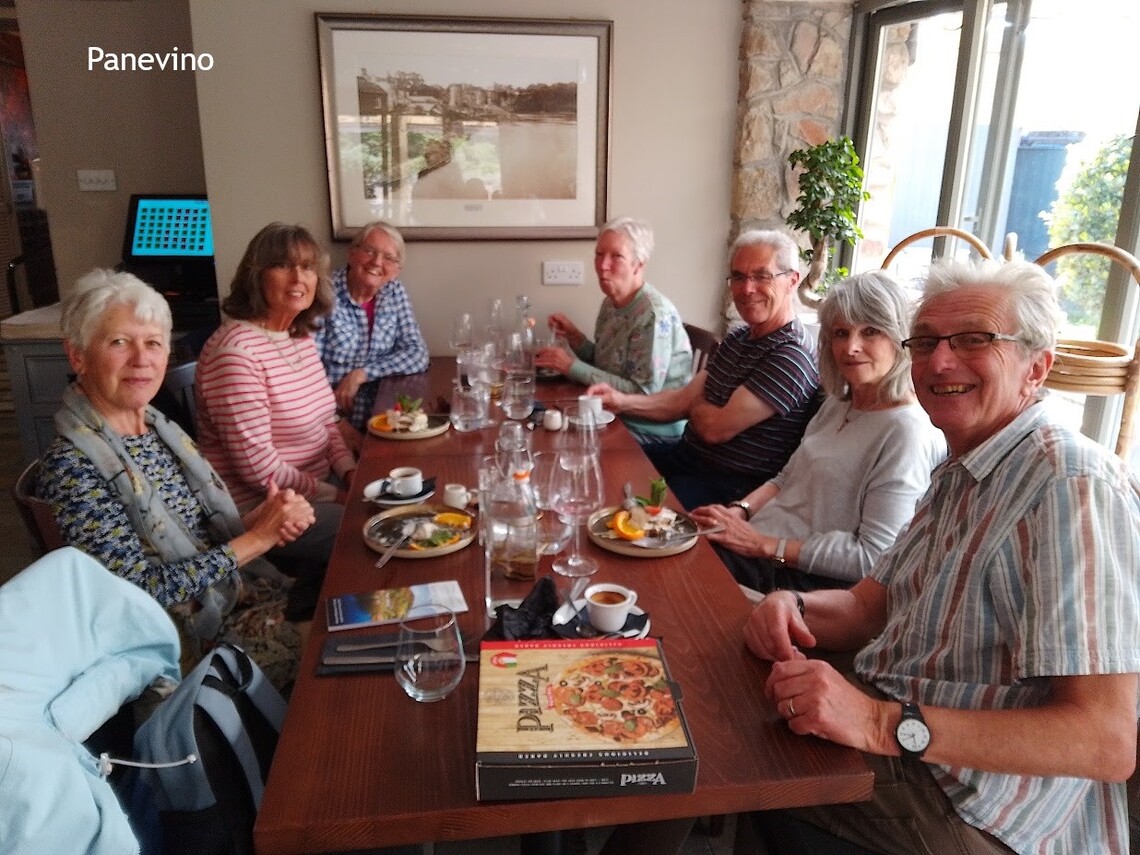CDAS Summer visit to the Severn Princess in Chepstow
On Saturday 20th May 2023, 10 members and friends of CDAS visited Chepstow, to see the Severn Princess, which is currently undergoing conservation work there. Between 1959 and 1966 it provided a ferry service for vehicles and passengers between Aust and Beachley.
Our guide was Tim Ryan of the Severn Princess Preservation Trust. Tim, along with Richard Jones, (grandson of the founder of the company that ran the ferry, Enoch Williams) are part of a very committed group who discovered the ferry in Galway, Ireland in 1999, bought it, had it towed back to Chepstow in 2003, and have been working on it's conservation ever since. It now sits on the bank of the river Wye, under the railway bridge build by Brunel in 1852. This is next to the modern road bridge taking the A48 over the river. Two major housing developments are being built on former industrial and ship building sites near the ferry. Tim explained that before the major expansion of the docks at Newport, Cardiff and Swansea in the second half of the 19th century, Chepstow was the largest port in Wales. The Royal Navy built wooden warships there using oak from the Forest of Dean and continued building iron warships to the time of WWI. Other industries included the manufacture of rifle and musket stocks using local walnut wood. The sections of road deck for the first M5 Severn Crossing were also built there and floated round to the bridge and winched up into position.
When the housing developments are finished the ferry will mark the end (or beginning ) of the Welsh Coastal Path.
Ferries have operated across the Severn since Roman times, but passenger ferries fell out of use with the coming of the railway links between England and South Wales. However with the advent of the motor car, a car ferry service started in 1934 by the Old Passage Severn Ferry Crossing Company. The owner Enoch Williams operated 3 ferries over the years, The Severn Queen, The Severn King and finally the Severn Princess. This was built in Hull and purchased for £50,000.
As it save a 60 miles road journey via Gloucester the ferry was well used. However, as it could only take 19 cars, long queues would build up. A turn table on the deck was used to position the cars on the ferry. They were packed in so tightly that the car doors couldn't be opened during the crossing. On one occasion a child lost a finger during this process. Luckily a doctor was another passenger and he made his way to the casualty via several car windows. He wrapped the finger up and the girl was rushed to a local hospital (The Plastic) where it was successfully reattached.
Tim had a wealth of other stories about the ferries' operation. On one occasion the captain was taken ill and the engineer was ordered by the owner to make the crossing despite there being heavy fog. It didn't arrive in Beachley after 20 minutes as expected but eventually it arrived in Avonmouth 4 hours later!
On another occasion a VW Beetle slid in to the river from one of the jetties, and was washed up river on the tide being followed by the ferry. It floated as Beetles are air tight. Eventually a grappling hook was attached to the steering wheel and it was towed back to Avonmouth.
Bob Dylan used the ferry after his concert at the Colston Hall (now the Beacon) in 1965. He had been booed by the audience who didn't like him using electric guitars in the second part of his concert. He was still very upset when he made the crossing being heard to say “Why did the boo me?”.
The Beatles used the ferry after a concert in Bristol (their last according to Tim). Chepstow school children ( including Tim) lined the streets of the town. Tim recalls waving at them and being delighted that they waved back.
Two Aust school girls bunked off school in the 1950s and came to Chepstow for the day planning to get the ferry back in time for the end of lessons. Unfortunately the ferry was cancelled due to the very high tide. Contact was made with their parents via the only phone in the village and a very irate father made the 60 mile round trip to collect them.
There were 3 “Man Overboards” during the running of the car ferry service but all were safely rescued from the water by the crew.
Although mainly for motor cars, Tim reported that over the years other vehicles including a double decker bus, coaches. lorries ,a removal van and a gypsy caravan and it's horse, all used the ferry.
The estuary is one of the most treacherous stretches of water in the world and great skill was needed to navigate it.
All this came to an end on September 8th 1966 when the ferry ran for the last time as the M4 Severn Bridge was opening the following day. The Severn Princess had been in service for only 7 years and was still in good condition. It was sold for £50,000 to a Dublin ferry company. However it proved to be too big to operate there and ended its working life as a general purpose vessel operating around the Irish Coast. It was about to be scuttled on the orders of Galway Council when it was bought for One Guinea by Tim and Richard.
They approached a local business man in Chepstow who gave them £15,000 to bring the ferry back to the town. After the various holes had been plugged with concrete it was towed by tug across the Irish Sea. The crossing took 4 days. Tim had to return to the benefactor as a further £2,500 was needed and the man took the money in cash from his safe and gave it to Tim on the spot. He explained that he had made his money using the ferry for his business.
Work on the conservation of the ship is still ongoing. The teak deck was removed, the engines taken out and the turntable has been restored so that it now turns. The plan is to construct a viewing platform next to the ferry so people can look down on to the deck. We had a precarious climb up a ladder to view the deck.
Tim was a very entertaining speaker. He taught at the school JK Rowling attended as a girl and there is some speculation that one of her characters in the Harry Potter books was based on Tim.
After the visit we had an excellent lunch at the Panevino restaurant overlooking the River Wye.
Tom Chown
May 2023
